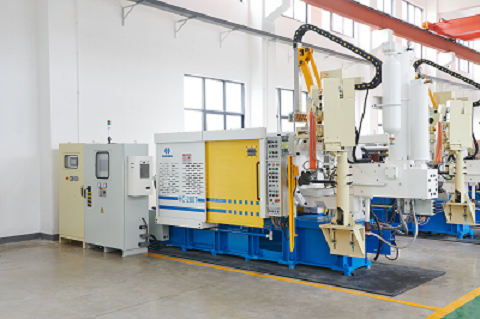Common faults in die casting machines can hinder part quality. This article details these issues and provides practical solutions.

Die casting machines are essential in modern manufacturing, especially for producing high-precision metal parts. However, like any machinery, they can encounter various faults that may affect production efficiency and part quality.
Understanding these common faults and their causes is crucial for maintaining optimal machine performance. This article will explore some of the most frequent issues encountered in die casting machines and provide insights into their analysis and solutions.
Detailed common faults and analysis of die casting machine
1. Common faults in die casting machines-Leakage
Symptoms:
Leakage is one of the most common issues in die casting machines. It can occur at various points, such as the platen, hydraulic system, or die clamping area. Leakage not only wastes material but can also lead to unsafe working conditions.
Causes:
- Worn Seals: Over time, seals and gaskets can wear out, leading to leaks.
- Improper Assembly: Incorrect installation of machine components can cause misalignment and subsequent leakage.
- High Pressure: Excessive operating pressure can stress seals and joints, causing them to fail.
Solutions:
- Regularly inspect and replace worn seals.
- Ensure proper assembly and alignment of machine components.
- Monitor and adjust operating pressures to avoid exceeding recommended limits.
2. Common faults in die casting machines-Defects
Symptoms:
Defects in the final cast parts, such as porosity, cold shuts, or incomplete filling, are common issues that affect part quality and consistency.
Causes:
- Inadequate Venting: Poor venting in the die can trap air, leading to porosity.
- Improper Mold Temperature: Incorrect mold temperature can cause incomplete filling or cold shuts.
- Insufficient Shot Speed: Slow injection speed may prevent the metal from filling the mold cavity completely.
Solutions:
- Optimize venting systems in the die design.
- Maintain consistent mold temperatures through proper heating and cooling systems.
- Adjust shot speed and pressure settings to ensure complete and uniform filling.
3. Hydraulic System Malfunctions

Symptoms:
Hydraulic systems in die casting machines are prone to issues such as pressure loss, slow operation, or erratic movements.
Causes:
- Contaminated Oil: Dirty hydraulic oil can clog filters and valves, leading to pressure loss.
- Worn Components: Pumps, valves, and seals can wear out over time, affecting hydraulic performance.
- Leakage: Hydraulic leaks can cause fluid loss and reduced system efficiency.
Solutions:
Regularly filter and replace hydraulic oil.
Inspect and replace worn hydraulic components.
Identify and repair leaks promptly to maintain fluid levels and pressure.
4. Die Clamping Issues
Symptoms:
Problems with die clamping can lead to misaligned molds, flash formation, or even mold damage.
Causes:
- Worn Clamping Components: Over time, clamping components like tie bars and clamping plates can wear out.
- Improper Clamping Force: Incorrect clamping force settings can cause mold misalignment.
- Mechanical Damage: Accidents or improper handling can damage clamping mechanisms.
Solutions:
- Regularly inspect and replace worn clamping components.
- Calibrate clamping force settings according to mold specifications.
- Implement proper handling procedures to avoid mechanical damage.
5. Electrical System Failures

Symptoms:
Electrical faults can cause machine shutdowns, erratic operation, or inaccurate control settings.
Causes:
- Loose Connections: Vibrations and wear can cause electrical connections to loosen.
- Faulty Components: Sensors, relays, and control boards can fail over time.
- Overloading: Electrical systems can be overloaded, leading to overheating and component failure.
Solutions:
- Regularly inspect and tighten electrical connections.
- Replace faulty electrical components promptly.
- Monitor electrical loads and avoid overloading the system.
Die casting machines are complex and highly engineered equipment that require regular maintenance and attention to detail. Common faults in die casting machines, such as leakage, casting defects, hydraulic issues, clamping problems, and electrical failures, can significantly impact production efficiency and part quality. By understanding the causes of these faults and implementing appropriate solutions, manufacturers can minimize downtime and ensure consistent, high-quality production.
HAICHEN: A Leading Die Casting Machine Manufacturer
At HAICHEN, we specialize in designing and manufacturing high-quality die casting machines that are built to withstand the rigors of industrial use. Our machines are equipped with advanced features to prevent common faults and ensure reliable operation. With HAICHEN, you can trust in our commitment to innovation, quality, and customer support, making your die casting operations more efficient and profitable.




